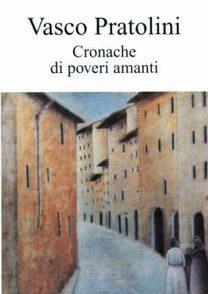From the outside, it is just one among the many XVIth century palazzi which can be found at almost every corner of the city. But number 18 of via Maggio is no ordinary palace and hides more beauty than the eye can see at a first glimpse. Behind the Renaissance façade is indeed the church of St Mark, the first Anglo-Catholic church founded in Florence, established in 1881 by Reverend Charles Tooth, chaplain of the English church in Siena, with the purpose of promoting Anglo-Catholic principles among the Florentines and offering the resident Anglo-Catholic community an alternative to the English church of Holy Trinity, started in the city thirty years before.
The church stands today – still in its original site more than a century later – not only as the last English church in Florence (Holy Trinity being managed by the English until the Second World War, then sold to the Waldensians in 1965), but also as a unique and picturesque example of the fusion of diverse artistic styles, each of which has left its distinctive mark on the outline of the church and has contributed to its ultimate charm. The building where it is situated is a combination of original Medieval interiors with a typical Florentine XVIth century façade. Though never demonstrated, it is likely that this was the location of the Machiavelli palace, home to the Machiavelli family in the 1500s. The interior decorations were added in the 19th century under the coordination of Reverend Tooth and they were initially designed to follow the principles of the Victorian Neo-Gothicism beloved by the English community of the time. For the purpose, Reverend Tooth involved in the project many resident English artists, and was helped in particular by the architect G.F.Bodley – well-known Neo-Gothic decorator, architect of the Holy Trinity church in Florence and All Saints in Cambridge – Pre-Raphaelite painter J.R. Spencer Stanhope, his wife, and Sir Walter Spencer Stanhope. It is still an open debate whether it was Bodley or John Roddam who actually designed the church interiors. It is usually assumed that it was John Roddam who introduced the red and green decoration for the walls and ceiling: the pillars are painted Indian red and the golden pilasters decorated with plant motifs, most of them unfortunately lost during the flood in 1966. The decoration – also repeated in green and red on the ceilings and along the arches – which include flowery motifs, such as sunflowers and lilies, hymns’ inscriptions written in gothic characters, religious monograms, heraldic motifs, and silvery blue damask stencilling, was apparently prompted to the designer by XVth century patterns in Elizabethan style found on the original hangings, brocades, and tapestries of the period, and well documented in 19th century encyclopaedias and dictionaries which had already been a precious source of inspiration for William Morris and the Arts and Crafts movement.
A current study has pointed out similarities between the pineapple stencil on St Mark’s walls and the pomegranate pattern found in both All Saints and Holy Trinity, suggesting the involvement of Bodley in the decorating process. Many scholars indicate however that the hand at St Mark’s is not the same, and claim that it was John Roddam who did the stencilling, possibly from an original design by Bodley.
When the art work was completed – and despite Reverend Tooth’s initial intentions – , St Mark’s had little of the pseudo-Medieval quality it had sought. The dominant gold and warm soft Indian red colouring, and the Pre-Raphaelite decorative, flowery motifs evoke the great oeuvres of the masters of the Italian Renaissance, Botticelli, Ghirlandaio, Carpaccio, their example re-interpreted by the English 19th century imagination. Other elements also contribute to the overall effect of an English church in Renaissance style: the high altar, on a wooden Neo-Renaissance golden structure with four small Corinthian pillars, has a marble front with an alabaster bas-relief which portrays a perfect copy of Fra Angelico’s Last Supper. It also contains a triptych inspired by the XVth century Tuscan maestri, a central panel with the Crucified Christ adored by St Mary Magdalene set in a Tuscan landscape, St Mark and Our Lady on the left, and St John the Evangelist and St George on the right panel. The roundels, dated approximately 1884, depicting the Risen Christ and praying angels, are in Pre-Raphaelite style inspired to the Italian Quattrocento. A special touch is added by a series of seven hanging lamps in Venetian style in front of the High Altar, donated at the end of the 1800s by an English lady in memory of her late husband. But St Mark’s two gems remain the paintings now standing in the central nave of the church: L’Arcangelo Michele che Calpesta il Drago on the right pillar and The Annunciation on the left. These two paintings are by 19th century artist Giuseppe Catani Chiti from Prato, one of the most representative interpreters of Italian Pre-Raphaelitism, educated within the Neo-Renaissance environment of the Accademia of Siena and apprentice to one of the founders of the Italian movement of the Nazareni, whose principles inspired the members of the PRB.
Between the XIXth and XXth century, St Mark’s became an important cultural and spiritual base for the English community in Florence, visited by artists and personalities of the time, especially by the members and friends of the Pre-Raphaelite movement. Pre-Raphaelite artist Holman Hunt is known to have had a special bond with the church: St Mark’s still possesses a communion chalice inscribed in the memory of his wife, Fanny, who died in Florence in 1866 of an illness brought on by childbirth.
St Mark’s continues today in its role of a liturgical and cultural meeting-point, it welcomes all religions and races, and hundreds of people from all over the world visit it every year. Every week it hosts many activities which have increased in number over the years and made the church well-known within the local community: a book club, regular Bible studies, a thrift shop – a good place for taking clothes and other items for sale for the homeless – and lessons of conversational Italian. Its musical evenings, held in the church, have now reached their third season and are so well reviewed that even the Washington Post recommends them. Most people coming to the musical evenings also take part in the Sung masses, organized every Sunday morning after Said mass. But St Mark’s also regularly hosts cathedral choirs from England and many other countries worldwide – Australia and USA – which specifically request the pleasure of singing in this church and are invited to perform in its suggestive environment. Music becomes an important moment for gathering, but for charity too, as among the many charity activities organized by the church, there is also the retiring collection following the evening concerts which raises funds for the orphanage of Amala, India, where a special missionary activity is currently held.
The church is extremely attentive to its artistic patrimony as well. Father Lawrence MacLean, the present chaplain, supervised closely the recent and complete restoration of the beautiful Greek icon dated late 17th century Virgin and Child, now back to its splendour and displayed in the Lady Chapel for everyone to see. Other paintings are currently being restored, the beautiful Venetian Lady displayed in the chaplaincy has recently undergone cleaning. In 2003, thanks to the donations of the congregation and friends of the church, Father Lawrence was also able to commission a new icon. This was written by the Fraternity of Jesus of Florence, and it represents a young St Mark. It’s the first image the church possesses of the saint.
As Father Lawrence has pointed out during our interview, though projected towards the future, St Mark’s is very much a first century church, still recreating that primeval, uplifting atmosphere of a place where people come and leave with the message of God. It seems hard to believe that one could regain simple meanings of life within such a decorated, ornate, even distracting context. However, this was the main purpose which both the Pre-Raphaelites and the Anglo-Catholic movement had in mind when building the church: to express religious mystery and create an atmosphere conducive to devotional worship. And besides, for the pre-Raphaelites themselves, as Berenice Shreiner writes, “Decoration is not there to tell a story, but to reinforce the sense of abstract wall plane – a symbol for the infinite nature of God.”
St. Mark’s Church
“It seems hard to believe that one could regain simple meanings of life within such a decorated, ornate, even distracting context. However, this was the main purpose which both the Pre-Raphaelites and the Anglo-Catholic movement had in mind when building the church: to express religious mystery and create an atmosphere conducive to devotional worship.”
Said Masses: Tuesday,
Thursday and Saturday 9.30 a.m
Wednesday 10.00 a.m
Friday 12.30 a.m
Sung Mass : Sunday 10.30 a.m






